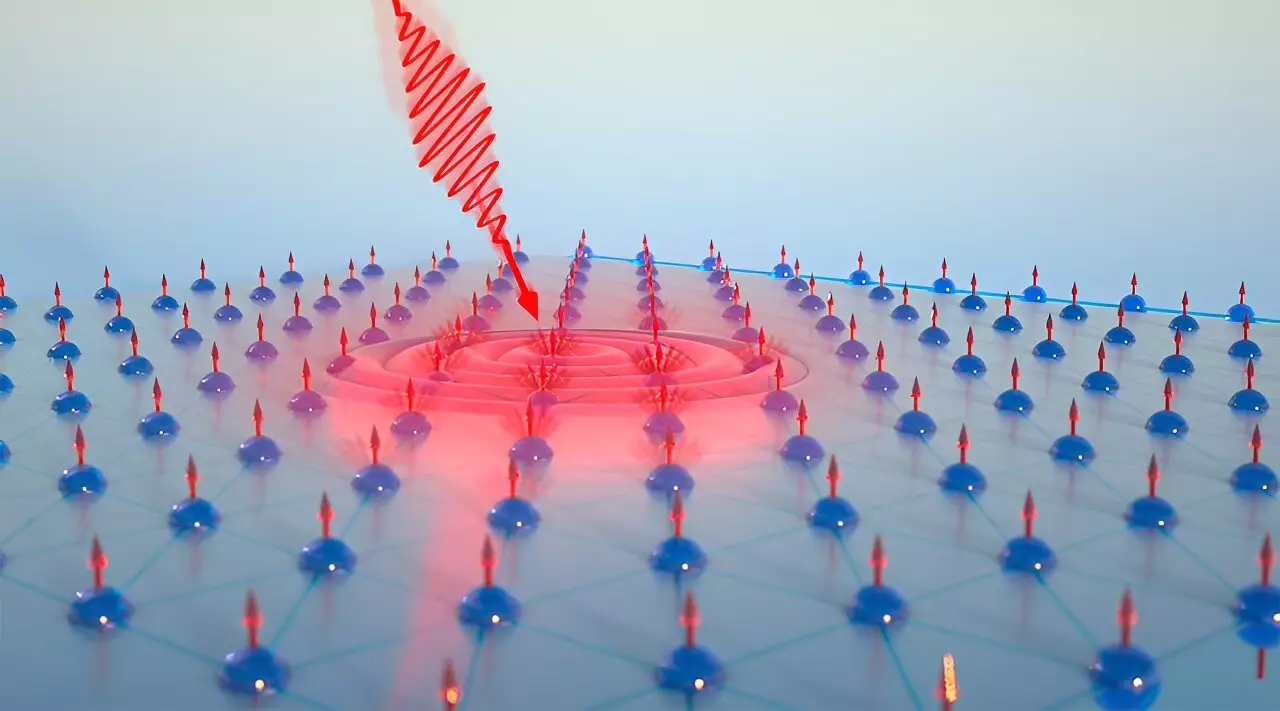In the rapidly evolving realm of computational technology, the quest for more efficient data storage solutions is ever-pressing. Recently, a breakthrough by researchers at the University of Chicago’s Pritzker School of Molecular Engineering has illuminated a path toward the development of a novel optical memory that stands to redefine the future of data management. Their work focuses on a unique compound composed of manganese, bismuth, and tellurium, known as MnBi2Te4. This material exhibits magnetic properties that can be swiftly modulated through light exposure, which holds significant implications for energy-efficient data storage and rapid accessibility.
MnBi2Te4 is primarily recognized as a magnetic topological insulator (MTI). This characteristic allows it to function as an insulator in its interior while conducting electricity on its surfaces, creating what scientists term “electron freeways.” These pathways are pivotal for transporting quantum data, yet practical applications have remained elusive due to the complexity inherent in the material’s properties. The research team, led by Assistant Professor Shuolong Yang, embarked on this venture with the aim of unraveling the material’s pungent electronic characteristics that had stymied past attempts to utilize MnBi2Te4 effectively.
Through meticulous study, the researchers identified a fascinating competition within the material: electrons fluctuate between two distinct states—one optimized for quantum information encoding and another sensitive to light that supports optical storage. This discovery not only enhances the material’s potential applications but also provides a clearer understanding of the forces at play within the material itself.
To gain deeper insights into the behavior of electrons in MnBi2Te4, the research team applied advanced spectroscopic techniques capable of capturing the material’s properties on ultrafast time scales. By employing time- and angle-resolved photoemission spectroscopy developed in Yang’s lab and collaborating with experts to carry out time-resolved magneto-optical Kerr effect (MOKE) measurements, they were able to visualize the interaction of electrons with photons. This innovative approach revealed why MnBi2Te4 struggled to manifest the expected topological properties, uncovering the existence of a quasi-2D electronic state competing with its topological counterpart.
This electron state, while it may not serve the needs of stringent quantum data applications, presented a newfound opportunity for optical memory systems. The research team recognized that the tight coupling between the material’s magnetic properties and external light makes MnBi2Te4 a candidate for developing a highly efficient optical memory.
With the potential to revolutionize digital memory, Yang’s team is now poised to delve further into the applications of MnBi2Te4 in optical memory. Their next endeavors will involve manipulating the material’s properties using lasers, aiming to design a memory system that could dramatically outperform current electronic memory devices in both speed and energy efficiency.
Yang’s assertion about the dual relevance of understanding both electron states in MnBi2Te4 is particularly intriguing for future research. A deeper comprehension of the relationship between these competing states could not only facilitate the creation of efficient optical memory but also enhance the viability of MnBi2Te4 as a robust magnetic topological insulator.
The research on MnBi2Te4 is a prime example of how foundational scientific inquiry leads to unexpected breakthroughs, steering engineers toward innovative technologies. As we stand on the verge of a potential transformation in data storage methods, the interplay between light and magnetism within this material offers exciting possibilities. In an age where data generation and consumption are growing exponentially, advancing optical memory using MnBi2Te4 could herald a new era of efficiency and capability, positioning it as a frontrunner in the future landscape of digital technology. As the research progresses, it is clear that the implications of this work extend far beyond the laboratory, hinting at profound impacts on how we store and manage information in the years to come.


Leave a Reply